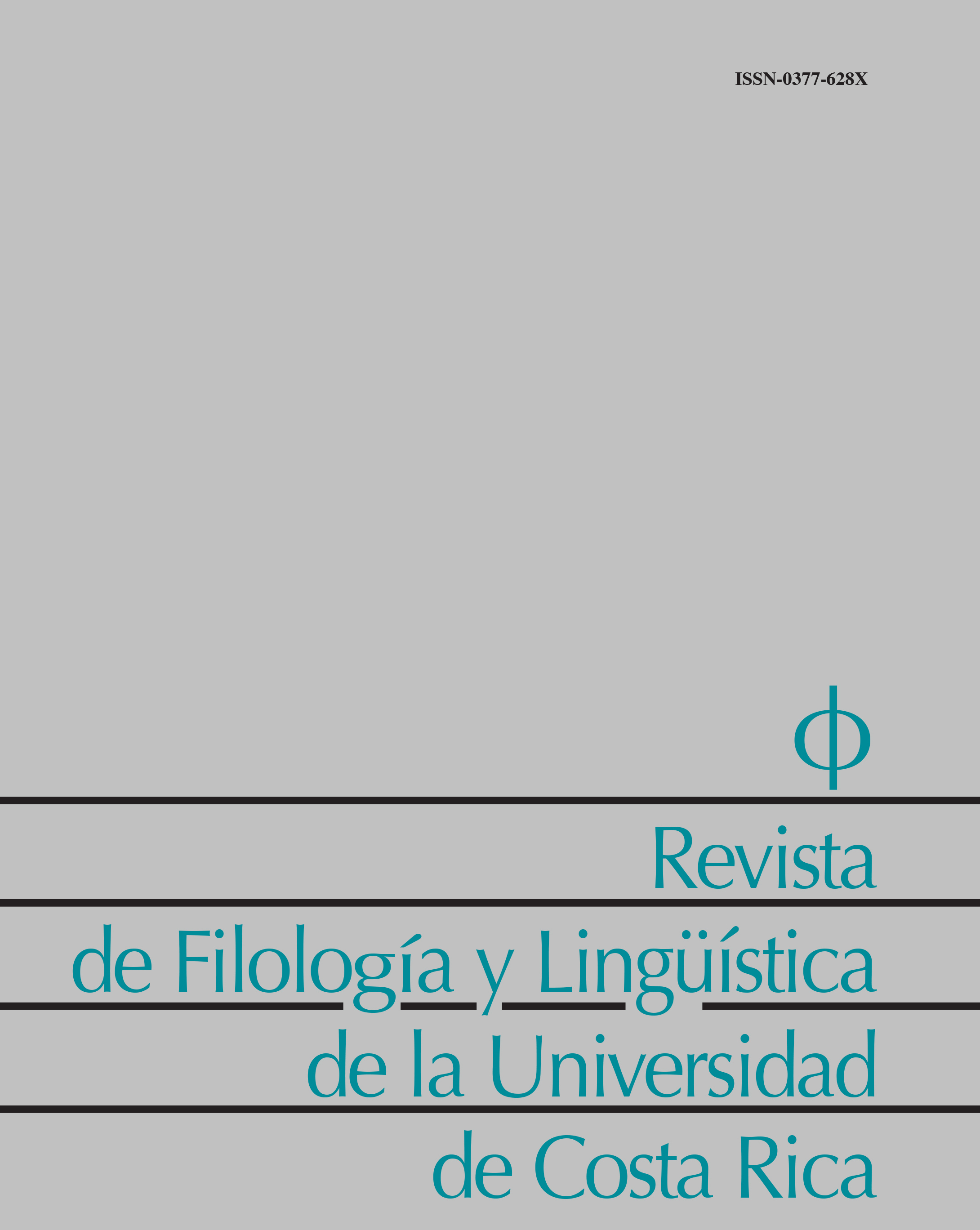Abstract
The aim of this paper is to show the behavior of the degree of condensed bonding present in stories told by learners of Spanish as a second language, arranged in narrative structure and discursive levels. Regarding the methodology, first, oral stories (by level of communicative competence: beginner, intermediate, advanced) were obtained from sequences of images and anecdotes, which were recorded and transcribed. Second, the set of propositions was organized as narrative structure and discursive levels. For the analysis, on one hand, the degree of condensed bonding was resumed, by frequency and variety of links and, on the other hand, the use of that degree in the different types of account was observed. As a result, a relationship between the level of communicative competence, the degree of condensed bonding and the type of account was discovered. On this last item, it is stressed that the most productive events to condense stories are based on experiences and numerous images that evoke the narrative of actions.
References
Adam, J. M. (1985). Le texte narratif. Paris: Éditions Fernand Nathan.
Alonso, P. y Villalobos, V. (2009). La adquisición de la temporalidad en español como segunda lengua: la condensación en el relato. (Tesis de grado). Universidad Nacional de Costa Rica.
Alonso, P. y Villalobos, V. (2011). La adquisición de la temporalidad en español como segunda lengua: un enfoque funcional. Memoria del III Congreso Internacional de Lingüística Aplicada (CILAP). (49-55). Universidad Nacional de Costa Rica.
Berman, R., y Ravid, D. (2009). Becoming a literate language user. Oral and written text construction across adolescence. Por D. R. Olson y N. Torrance (Eds.). Cambridge Handbook of Literacy. (92-111). Cambridge: CUP.
Berman, R. y Verhoeven, L. (2002). Crosslinguistic perspectives on the development of text production abilities in speech and writing. Written Language and Literacy. 5 (1), 1-44.
Centro Virtual Cervantes (2015). Competencia discursiva. Diccionario de Clave Ele. http://cvc.cervantes.es/ensenanza/biblioteca_ele/diccio_ele/diccionario/competenciadiscursiva.htm [Consulta 1 de octubre de 2015].
Consejo de Europa (2002). Marco Común Europeo de Referencia para las lenguas: aprendizaje, enseñanza, evaluación. Madrid: Secretaría General Técnica del Ministerio de Educación Cultura y Deporte (MECD) y Grupo ANAYA S.A. http://cvc.cervantes.es/ensenanza/biblioteca_ele/marco/cvc_mer.pdf [Consulta 1 de octubre de 2015].
Fayol, M. (1985). Le récit et sa construction. Paris: Delachaux & Niestlé.
Klein, W. (1989). L’acquisition de langue étrangère. (Traduction par Colette NOYAU (ms definition)). Paris: Armand Colin.
Mayer, M. (1969). Frog, where are you? New York: Dial Books for Young Readers.
Noyau, C. (1988, mayo). Recherches sur l’acquisition spontanée d’une langue étrangère par des adultes dans le milieu social. Diallogue et Cultures. FIPF. 208-218.
Noyau, C. (1998). Granularité, traitement analytique / synthétique, segmentation / condensation des procés... Un aspect des interactions entre conceptualisation et formulation telles qu’elles peuvent jouer dans l’acquisition des langues. (Modèles linguistiques et Dynamiques des langues EA 372) et Groupement de Recherche sur l’ Acquisition des
Langues (GdR 113 C.N.R.S). Paris: Université Paris X- Nanterre.

